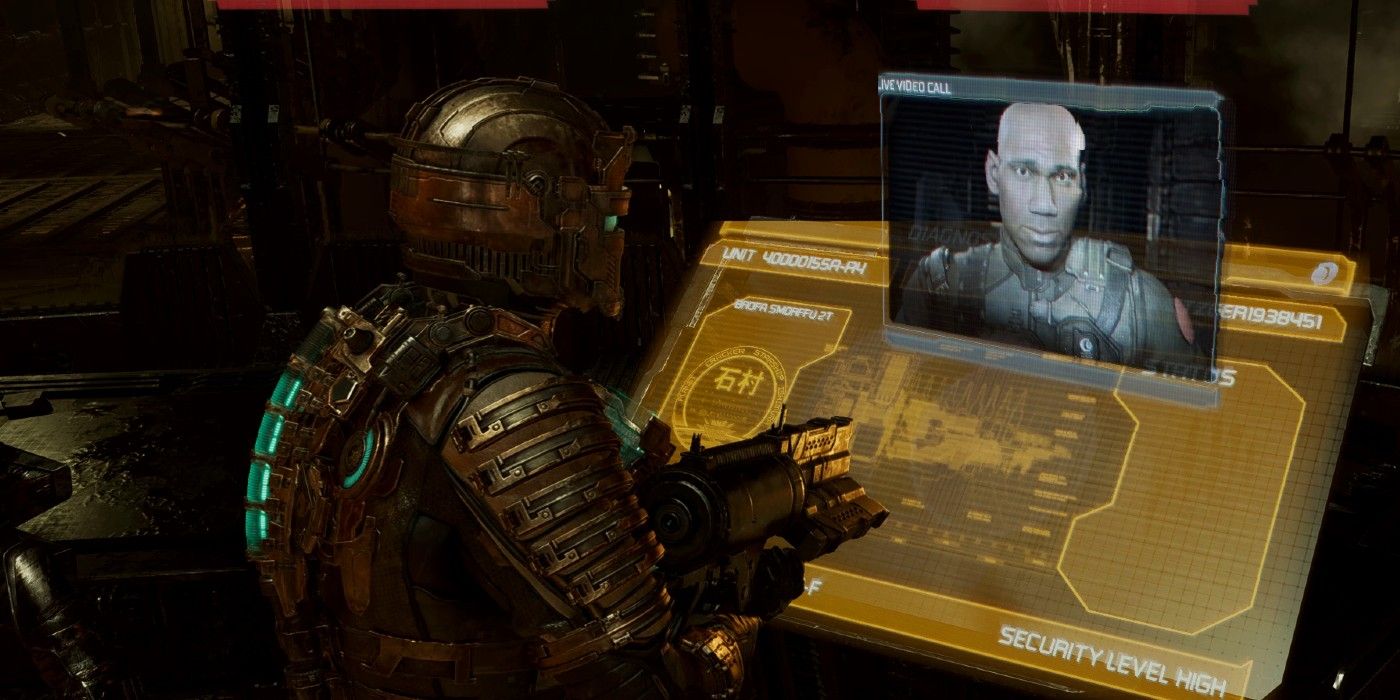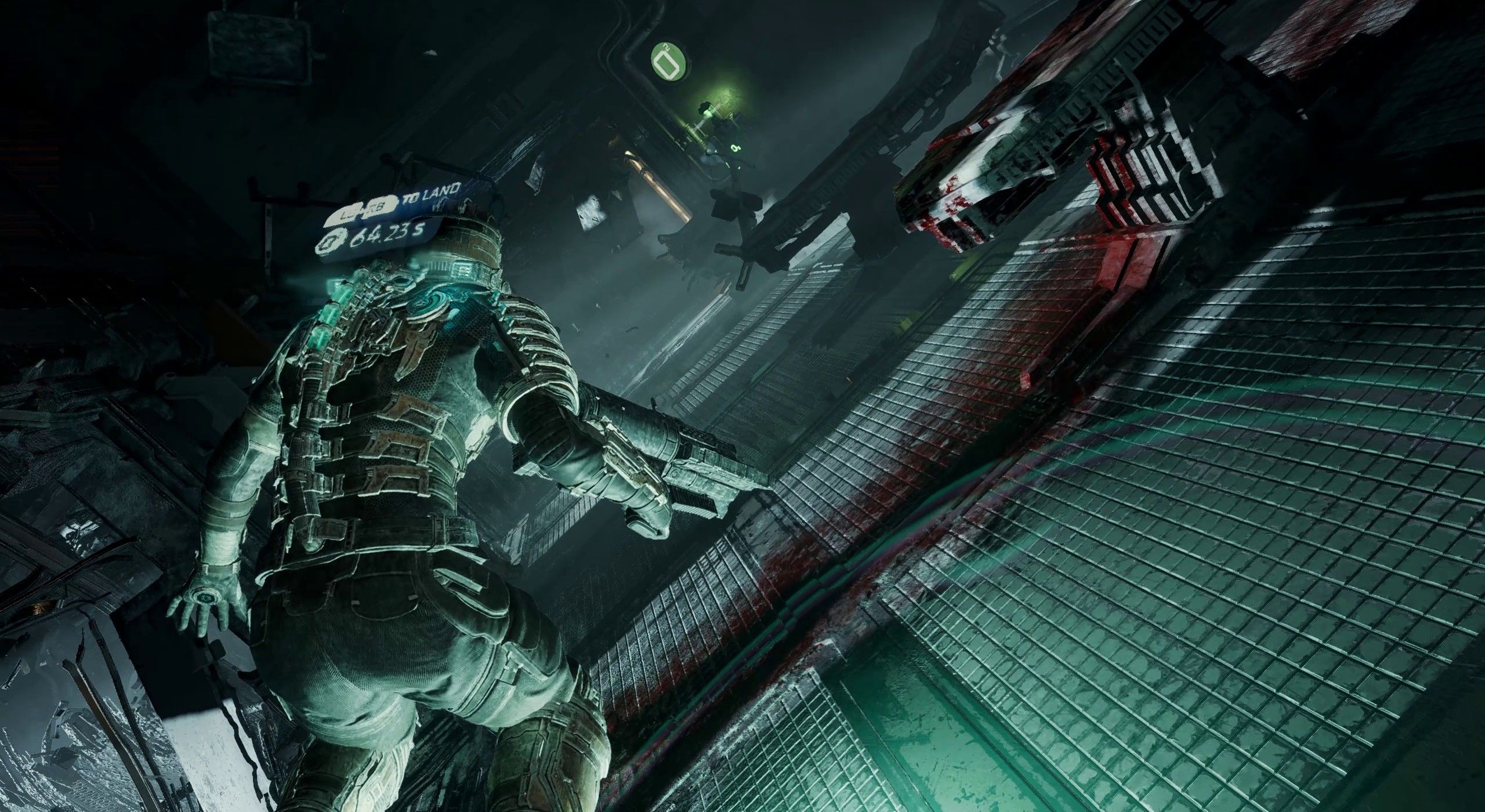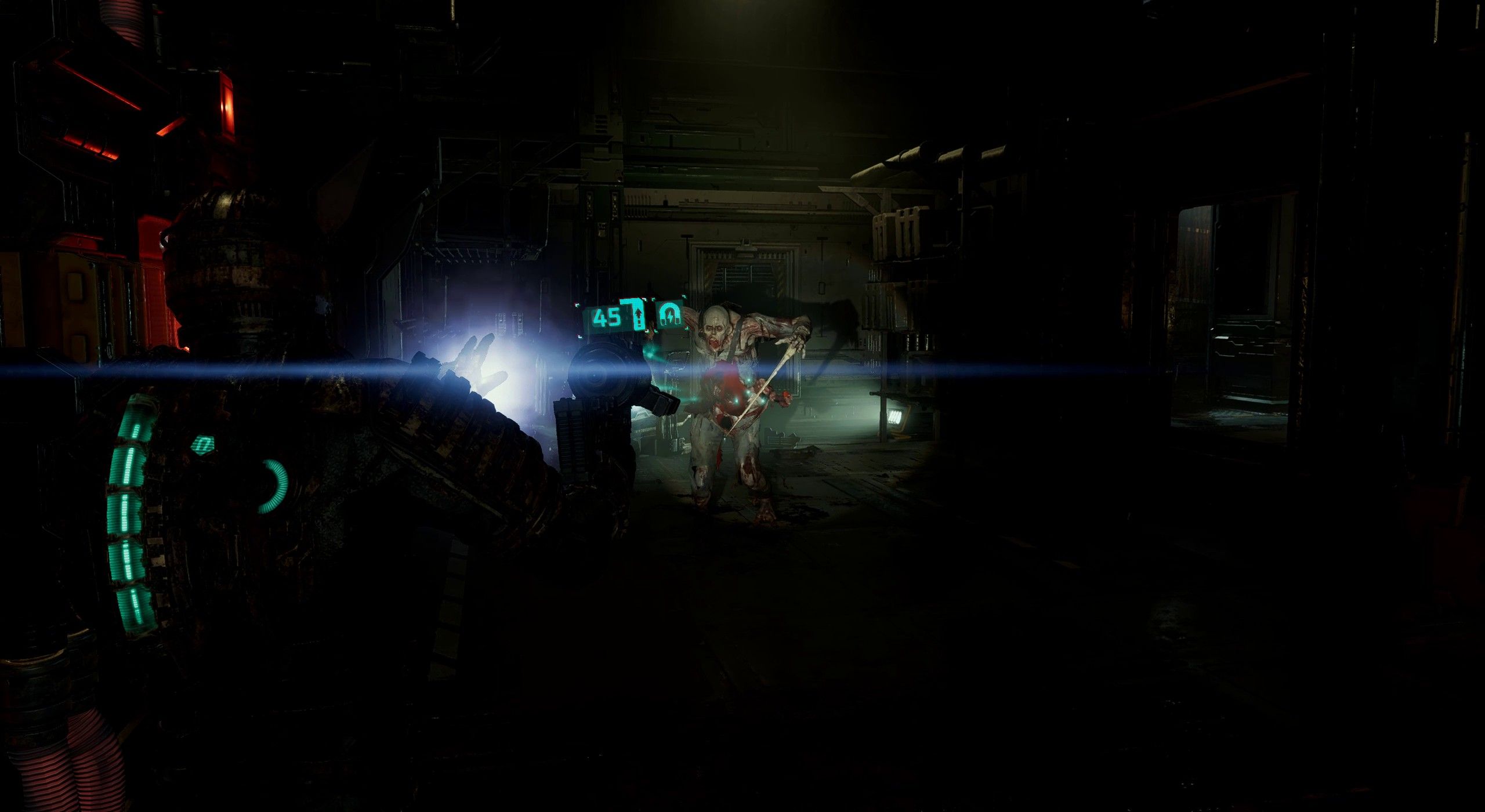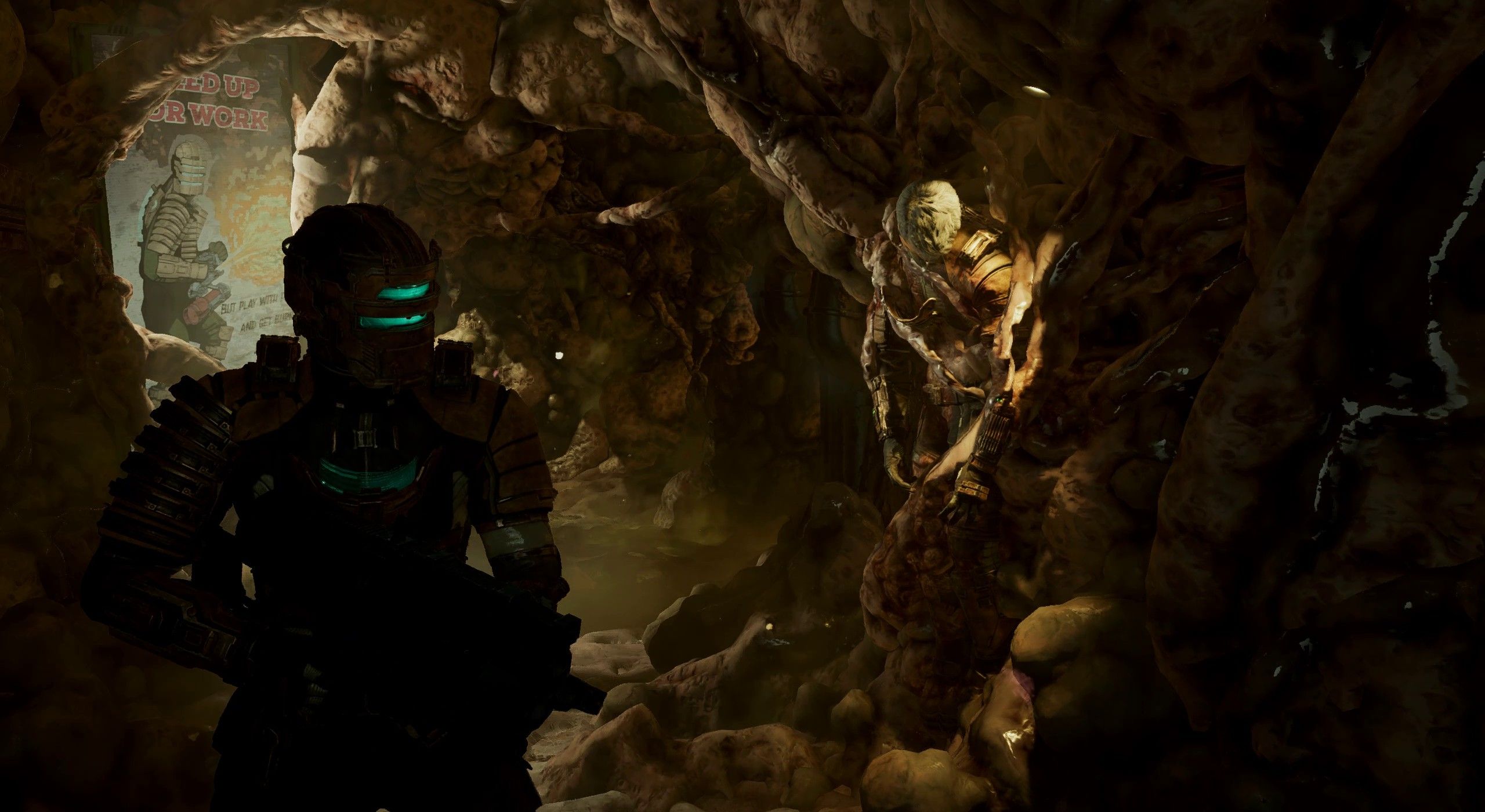Dead Space is a classic horror game that's endured in popularity since it was first released in 2008, and despite the fact that Dead Space 3 killed the original franchise, the trilogy has continued to maintain large base of dedicated fans. This enduring legacy is undoubtedly what's led to the coming Dead Space remake helmed by EA's Motive Studio, set to resurrect the franchise by updating its original incarnation for the modern day.
Motive Studio has been vocal not only about its intention of remaining faithful to the original vision of the Visceral Games classic, but also in showing how it's gone about the process of crafting a new Dead Space from the ground up. Technical updates to art, physics, and sound design come on top of a new and improved Isaac Clarke, who has a few new tricks up his sleeve that he didn't have his first time out.
With the Dead Space remake release only a few months away, Screen Rant visited EA's Redwood Shores campus to play a pre-release build of the game. Afterward, Creative Director Roman Campos-Oriola and Art Director Michael Yazijian spoke at length about the many creative choices, challenges, and processes of the game's development so far, and how they're making something new by honoring what came before.
To start us off, why do you think that Isaac is still such a popular character after all this time, and Dead Space is still such a beloved property?
Roman Campos-Oriola: That's a good one. That's a new one. Thank you for this. There's a lot of reasons, but I think it comes down to the core of the archetype of that character. Dead Space is an archetypal story; it's really a story that's coming from the '80s and '90s. Isaac is that type of blue-collar action hero in the wrong place at the wrong moment, but he still manages to pull it out. In a sense, he's a bit like Bruce Willis in Die Hard. It's that type of character, but in a sci-fi setting.
I think that's why it's still popular. That's an archetypical hero that is still today part of pop culture, and there is an appeal to that. Plus, I think what they did in Dead Space 2 and 3 has a lot to do with Isaac Clarke. He is a likable guy; you want to cheer for him. "Yes, do it! Don't die." That's why we also wanted to take him into Dead Space 1; to make Isaac Clarke in Dead Space.
Michael Yazijian: He has relatability, because he's an everyman character. He's an engineer, not a superhero. And yet he's against these great odds, so you're rooting for him all throughout the game.
Which brings me to my next question. Since he didn't speak in the original game, and now he has a voice, how is his role in the game evolving?
Roman Campos-Oriola: The reason we gave him a voice is because we were thinking about, "Okay, who's Isaac Clarke?" We have to bring him in, so he should have a voice. We had a lot of discussion about that and eventually decided. It's allowing us to give a bit more urgency to the main character in the events. If you remember the original, in chapter two, you have to break the barricade to enter the security room. We wanted to reinforce that engineering fantasy, but he's the main actor in that story. It's Isaac coming with the plan of how to blow it up, so it reinforced the character in that sense.
The one caveat, though, is that one of the core elements of Dead Space is isolation; it's that element of fear, or of being alone in the dark. When you're alone in the dark, for example, when you're in your basement trying to find the breaker—I don't know about you, but I talk to myself. "What is that thing?" Because it's human; it reassures you. The one rule we add that we almost never break—we maybe break it twice in the game—is that Isaac has a voice and can talk, but he will only talk when he's being talked to. He's only going to respond; he's never going to break the immersion.
When you have to go grab that hydrogen thing, and you're alone in that corridor, he's not going to say, "Why is that guy hitting his head on the wall?" That's not Isaac. Even when you grab the tank, it's not Isaac going, "Hammond, I have the thing." It's Hammond saying, "What's going on? Do you have that thing?" And Isaac will say, "Yeah, I got it." That one was very important for us.
You guys have talked already about how Isaac and Nicole are getting more focus, where he's actively searching for her a little bit more than in the original. Will there be any new faces in the story or any surprising changes made to existing characters?
Roman Campos-Oriola: We brought back Tanya Clarke to be Nicole, like she was Nicole in Dead Space 2, to get that same type of synergy. In terms of character changes and twists, yeah, there are some. I can't talk about it, but there are some characters that were basically just audio logs or text logs in the game. And in the same way that you saw the autopsy sequence with Nicole, and you saw a CCTV element of the Ishimura, we're using some characters like Jacob Temple or Elizabeth Cross, and giving them a bit more screen time. We're adding a little bit to their story and what happened to them aboard the Ishimura.
That's something we do for more characters so that, if you're interested in knowing what happened, we're giving a bit more of what happened to the crew, how different good and bad guys actually lived, and the events of that outbreak and the aftermath of it.
There's also obviously lots of really iconic moments in the original game, and big setpiece moments that everybody remembers. Things that stick in your brain years later. Are all of those going to be coming over verbatim, or are there some that time has been less time and didn't make the time?
Roman Campos-Oriola: Most of them, yes. Some, because we changed some of the mechanics, we're not recreating them exactly like the original. We have to adapt them for the new mechanic, but yes, all those iconic moments are back. Some with a little twist, to keep it fresh and surprising. The only ones that we really changed are the cannon sequence, the moment where you have to destroy the asteroid, and the moment where you're fighting the big slug boss. We really changed the mechanics, because we changed how Zero-G works, and we wanted to have something where you were more part of the experience.
Now, instead of doing the shooting gallery with your cannon and safe, you're actually going to be on the hull of the ship. You will have to go on the hull of the ship with the asteroid coming at you, and go and fix those cannons. And then fix the targeting by training the AI of the cannon that's shooting the things down, while the asteroids are coming at you, while you're on the hull of the ship with your oxygen going, etc. We're really using that mechanic also for the slug.
Basically, we were trying to make those moments a bit more epic and immersive; building on some of the improvements we've made. But for the rest, yes, all those major setpieces are back. We've even improved them and given them a bit more space and time, or more things to do around them.
Michael Yazijian: We're fleshing it out more and enhancing the overall feeling and experience, but not changing the story.
Will there be any new iconic set pieces?
Roman Campos-Oriola: Yes, I think so. Again, we're not changing the story, but we're adjusting some elements because of different rules of character that we're pushing a little bit more in the scheme of things. There are some moments that definitely will be [memorable]. At least, I hope so.
Are there any elements from Dead Space 2 or 3 that are being brought in, since you have the benefit of hindsight?
Roman Campos-Oriola: We haven't made real changes to the story, but what we did is try to build more bridges between Dead Space and 2, but also with the books or the animated stuff. We're trying to expand a bit more, because it was made before all those things. There was some connection, so we tried to improve a bit on these connections.
For example, posters in the Ishimura would reference places that are being talked about in Dead Space. There's things we've changed in some text logs to make it more cohesive with the way something is described in Dead Space 2. We've tried to make it fit, not necessarily better, but in a more cohesive way into the universe that has evolved in Dead Space.
In your opinion, who would win in a fight: original Isaac or new Isaac?
Roman Campos-Oriola: I think new Isaac would win that fight, because now he can fly.
Michael Yazijian: He's kind of got the upper hand. He can go side to side and feign an attack.
Roman Campos-Oriola: And he can talk, so he can deceive him. "Behind you!" [laughs]
Michael Yazijian: But in the end, Isaac wins. Right? [laughs]
As far as the wider universe, is anything changing? When you're revisiting this property, are you staying strictly beholden to the original universe and all of its details, or are any new details coming in? Are you changing anything about the way the universe was originally set up?
Roman Campos-Oriola: It's really in the same vein. Again, the type of changes we've made are to make it more cohesive with books or Dead Space 2. But we really tried to keep it true to what lived previously in Dead Space.
There are some elements and examples that I cannot give, because it's later in the game, and we're keeping that more as a surprise for the player. One thing that was important for us was to have enough novelties and unexpected twists that would also surprise the returning player. "You know how that story goes, but still, you were not seeing that coming, right?" We wanted to have that present in it.
Also, something we enhanced a bit compared to the original, is what the Marker wants. Why does it want to go back to Aegis VII? Why does it want to go back to its base [in the Pedestal Chamber]? Those are elements that we've been improving by building on top of elements of that are coming from the book or later elements in Dead Space 2.
Is anything happening with enemies? Are any additions coming from Dead Space 2 or 3, or are you making any additions as far as the enemies that people encounter, or is it pretty much the core group that people remember?
Roman Campos-Oriola: It's the core group that people remember. We're making some improvements and changes, but they're more visual or realization. The reason behind that is we did not want to change Dead Space in terms of the shooting experience or the survival horror pressure. We're not adding new enemies to that mix that are coming from the sequel, because the sequels are not exactly the same type of survival recipe.
We still want that experience. Even if it's more beautiful, it plays like Dead Space. It doesn't play like Dead Space 2, right? That was something we wanted to keep. Yes, we made some improvements in terms of behavior. For example, the Spitter was a creature that was already existing in Dead Space, but it was kind of forgettable and was coming only twice in the game. We enhanced it and took some elements of the Spitter from Dead Space 2 to turn it into a real enemy, but only because that role was already present in Dead Space. Because of the way we changed zero-G, we some enhancement in the behavior of the Leapers, for example, to make them even more dangerous in zero-G. Those kinds of things.
But it's really through the lens of keeping what's there, and really adapting it to the type of enhancements or modifications that we made. It's not about changing the recipe. Sometimes we have details, like if you remember the Twitchers - they are basically a Slasher that has merged with a stasis module. They move really fast, but if you start to shoot at them and remove the flesh, you can reveal the stasis module. And if you shoot that module, it will create an explosive module. That creates a nice twist in the way you can fight them. But it's small improvements on top of what existed instead of adding something new. And visually, of course.
Michael Yazijian: I'm sure you already saw some of the videos where they're completely built from the skeleton all the way up to the skin. All the fat, the sinew; all of that is just completely built, layer by layer. So as you're destroying them, you see dangling bits and all that nasty horror stuff. Blood VFX, guts, pustules and pus coming out. To just really enhance it.
So the Ishimura is basically a character unto itself. Are you sticking really close to what the Ishimura was in the original, or is the layout going to be any different?
Michael Yazijian: For us, it was always important to honor the legacy of the original Dead Space, and we wanted the Ishimura to be a character. In many ways, it is a character in the game. But the goal was more to look at what existed back then, and to actually make it feel more realistic. To make it feel more credible and add more variety; add more visual storytelling, so that all those spaces felt like places where the crew members were working and living - and dying, as well. [laughs] Poor souls.
Roman Campos-Oriola: And then in terms of layout, because we changed the structure of the ship, it's not anymore like ... chapter one, chapter two, etc. It's one fully interconnected chip. We had to make some modifications to the layout just to make them fit inside the ship, so that's why there are some changes that feel a bit weird. "In the original, that corridor was going left, and in the remake, it goes right. Why did you change that?" "Because in original, the next room would have been inside the room that's here." Some changes are because of that.
Other times, we're making changes because we've changed the way the gravity works. So, of course, you really get to take advantage of the fact that you fly around. It's bigger or has a different shape to it, these kinds of things. Also, in order to recreate the whole ship, we had to create a lot of new areas to do the actual connections between the different decks and adding new zones to make that really work. And like Mike was saying, to make it believable. Between the engineering deck and the bridge, there are two layers of connection, but one of them is all the channels along the tram. That's also some changes we made.
So one final question: given the recent success of other remakes, such as Capcom with its Resident Evil games, are there any plans for the future? We're all looking forward to more Dead Space.
Roman Campos-Oriola: Of course, we cannot say anything about that at the moment. [Laughs] For now we're hard at work finishing the game, but yeah, we're big fans of the franchise for sure.




